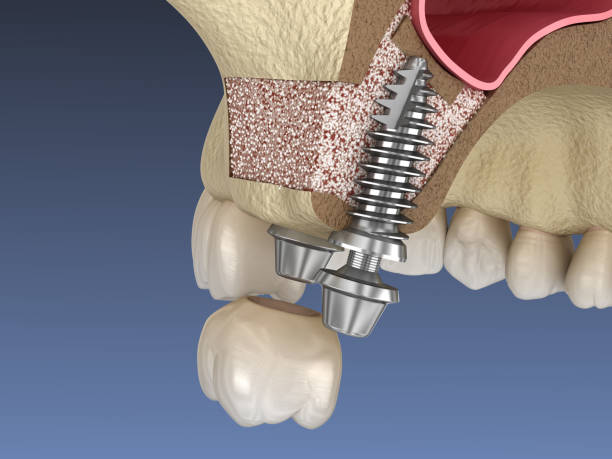Dental implants are an excellent option for people who have one or more missing teeth. Recent research shows that dentists in the United States perform around 5 million implant treatments each year. Certain circumstances may necessitate further therapies before an implant may be implanted. One such recommended therapy is a sinus lift. In this piece, we will look at when a sinus lift is acceptable and what the advantages are.
What Is a Sinus Lift or Augmentation?
A sinus lift is performed when a person requires dental implants but does not have enough jawbone to hold the implants owing to bone loss. The operation improves bone volume by inserting bone into the gap between the molars and premolars. During the surgery, the sinus membrane is elevated to provide space for the bone.
What Happens Before, During, and Following a Sinus Lift?
Before a Sinus Lift
A sinus lift includes moving bone to the upper jaw. The initial stage in the operation is to identify the source of the bone used in the surgery. Some of the most popular bone types utilized in sinus augmentation are:
- An autogenous bone, typically extracted from a region of your mouth;
- A synthetic bone-like substance.
Once the bone source has been discovered, the doctor will examine your jaw and sinus anatomy to determine the issue. Accurate measurements are also obtained to establish the breadth and height of your bone. They will use X-rays or computed tomography scans to evaluate your general jaw health as well as other important skull components.
During the Procedure
There are various options for sinus lift surgery. The appropriate approach for you is determined by a number of criteria, including the type of bone transplant and the amount of bone in your jaw. Some of the basic steps are:
- Getting intravenous or oral sedatives to numb the region and make you as comfortable as possible during the process;
- Incisions at the rear of your gum tissue to expose the bone;
- Cut a tiny portion of the bone while taking the appropriate care to avoid cutting the sinus membranes;
- Lift the sliced part of the bone into the sinus cavity to elevate the membrane;
- Apply bone graft materials to the elevated region before putting sutures to seal the incisions in your gums.
After the Surgery
After the treatment, the dental professional will give you instructions to help you recuperate. You may encounter negative effects such as edema and bleeding. However, this pain is rarely more than a few days. For a speedy and effective recovery, your doctor may advise you to:
- Do not smoke because it reduces your recovery time;
- Avoid cleaning teeth for a certain time to prevent dislodging clots;
- Avoid forceful nasal blowing and sneezing;
- Do not use a straw since it may dislodge clots;
- Take medicines to avoid infections;
- Take pain medicines to ease the discomfort.
Typically, you require a checkup one week following the treatment. During this session, the doctor will inspect the surgery site and remove any stitches that haven't dissolved yet. However, if you are experiencing persistent discomfort or uncontrolled bleeding, do not wait.
How Long Does It Take for a Sinus Lift to Heal Fully?
It takes at least six months to fully recuperate after sinus lift surgery. During this period, the sinus heals and the bone strengthens sufficiently to support a dental implant. Although this procedure may appear to be sluggish, keep in mind that the advantages will last a lifetime.
Are There Risks of Sinus Lift Surgery?
There are dangers associated with any surgical procedure. A surgery conducted by a trained and experienced periodontal surgeon reduces the degree of danger. The most serious danger of this procedure is the chance of piercing or tearing the sinus membrane. However, if this occurs, it will be quickly corrected. Another risk is a sinus infection. However, with the right medicine, this is easily avoided.






Comments